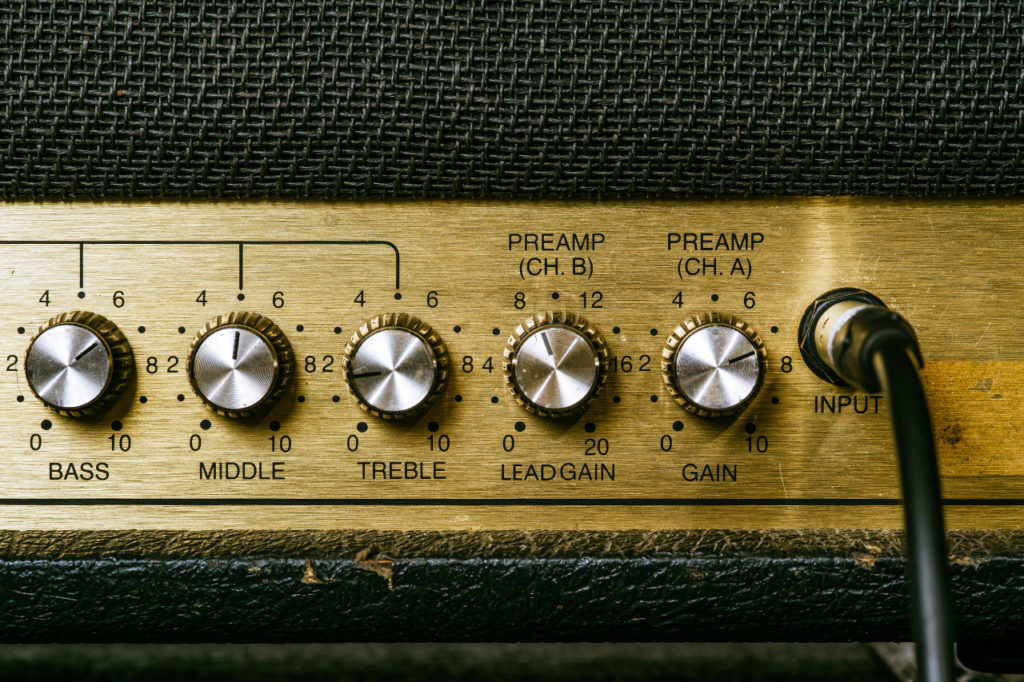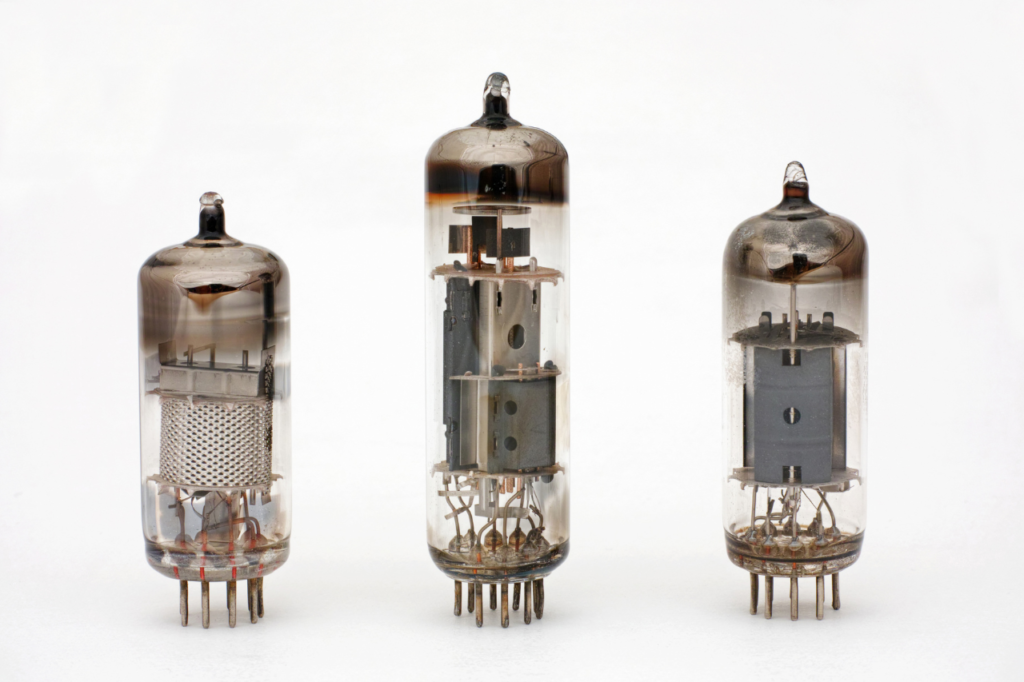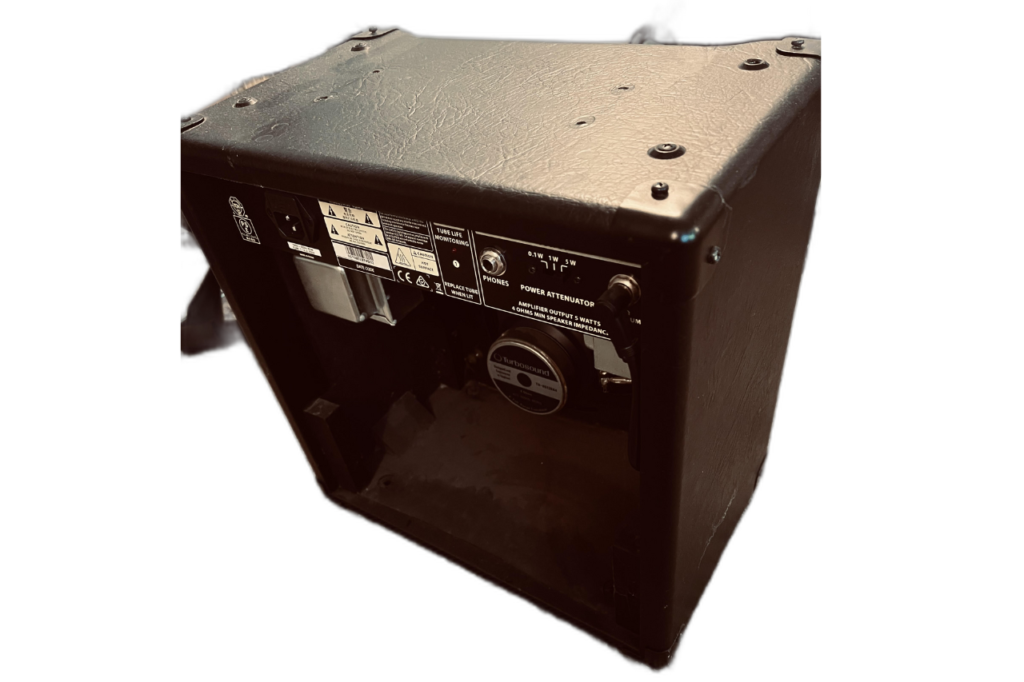Unlike acoustic guitars, electric guitars need amplification to sound great. As such, guitar amps play a vital role in helping players shape the sonic texture & output of their guitars. Read on to learn how guitar amps work and why they are so important on your musical journey.
The 3 Key Components of a Guitar Amp
Guitar amplifiers are pretty simple, they consist of three parts: The preamp, power amp, and speaker.
The Preamp
Within your preamp is all the circuity that is responsible for customizing the sound of your guitar. Essentially, it gives your signal its shape and quality, and it is the most visible piece due to the fact it is identified by knobs that are labeled terms like gain, volume, and tone. All of these knobs control your preamp.

How does the preamp shape your signal you ask? It does so by passing the input signal through circuitry called “gain stages.” Typically, the gain stage is an active component like a vacuum tube or transistor.

This component increases the size of the input signal, allowing it to more freely pass through the circuity of your amp. By allowing you to shape tone, generate overdrive, and add effects, your preamp plays a vital role in creating your unique sound.
After the preamp is done shaping the signal, your sound is still not ready though. It must now go to the power amp.
The Power Amp
Once your signal passes through the preamp stage, its signal strength is still not enough. As such, it’s not powerful enough yet to drive your amp’s speaker. The power amp allows you to drive a speaker by boosting your input signal to a much higher voltage. Your power amp is kept apart from the preamp because of the high temperatures and noise that power amp’s produce, which can conflict with your preamp.
After your power amp boosts the signal, now it’s ready to go to your amp’s speaker.
The Speaker (A.K.A. Speaker Cabinet)
Now that your power amp has delivered the signal, your speaker can get to work. Your speaker works as an electronic transducer, meaning, it receives electrical energy and transforms it into sound. Speakers come in all sorts of sizes and designs, and both of these will factor into the sound of your guitar. For example, larger speaker cabs allow for increased internal volume, which permits more low & midrange bass frequencies, resulting in a fuller sound. On the other hand, smaller speaker cabs are better for more midrange tones.
Construction style can also drastically impact the sound. For example, most combo amps are built with open-back construction where the speakers are visible due to the lack of a back panel.

Open-backed speaker cabinets allow for more sound to disperse into the room. The output of your amp is spread out into the room evenly, although the bass response is more limited.
Closed-back speakers on the other hand are more limited in terms of sound dispersion. For example, you will lose audibility by stepping to the right or left of the speaker. However, your bass will be increased.
Although there is much more to learn about amps, these are just some of the basics to get you started. With so many options, just get out there and start trying to see what works best for you!

